Make everyones contribution count, without putting people on the spot. Together you explore topics and dilemmas with surprising consequences and use everyone’s contributions for discussions and reflections.
What will you explore, discuss and learn today
with your participants?
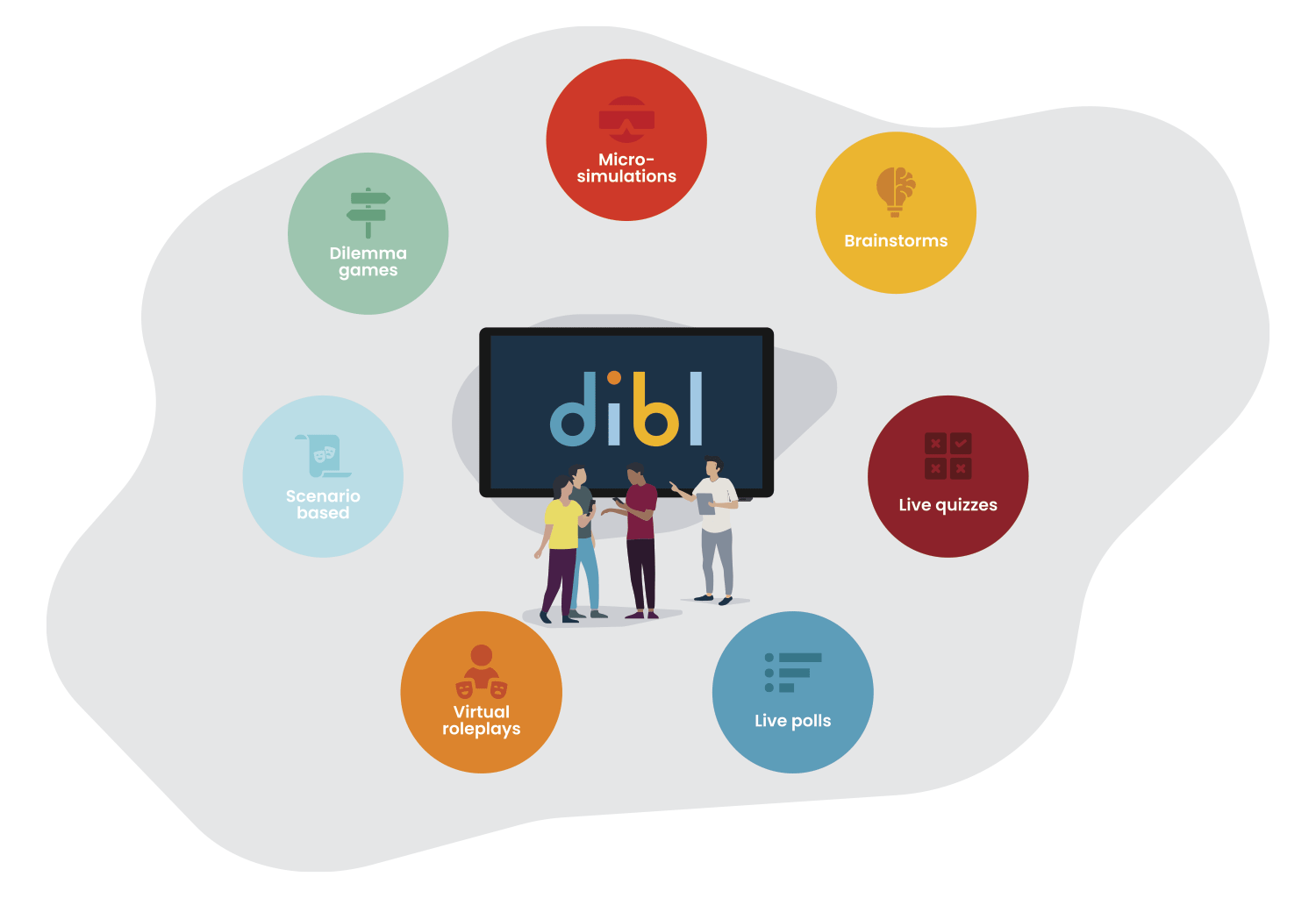
Our interactions
From presentations to discussions
Explore and learn through a scenario, where users collaborate and discuss to choose how to best approach challenges.
The most popular choice decides who the scenario unfolds with new consequences and information for users to react to.

Participants join different teams , each with a different role and relationship to the scenario. Teams can have different interests and goals, but can also receive different information, thus often necessitating collaboration across teams.
Immerse users more deeply into the subject matter to reflect on complex topics, where different agendas, perspectives and interests are at play.
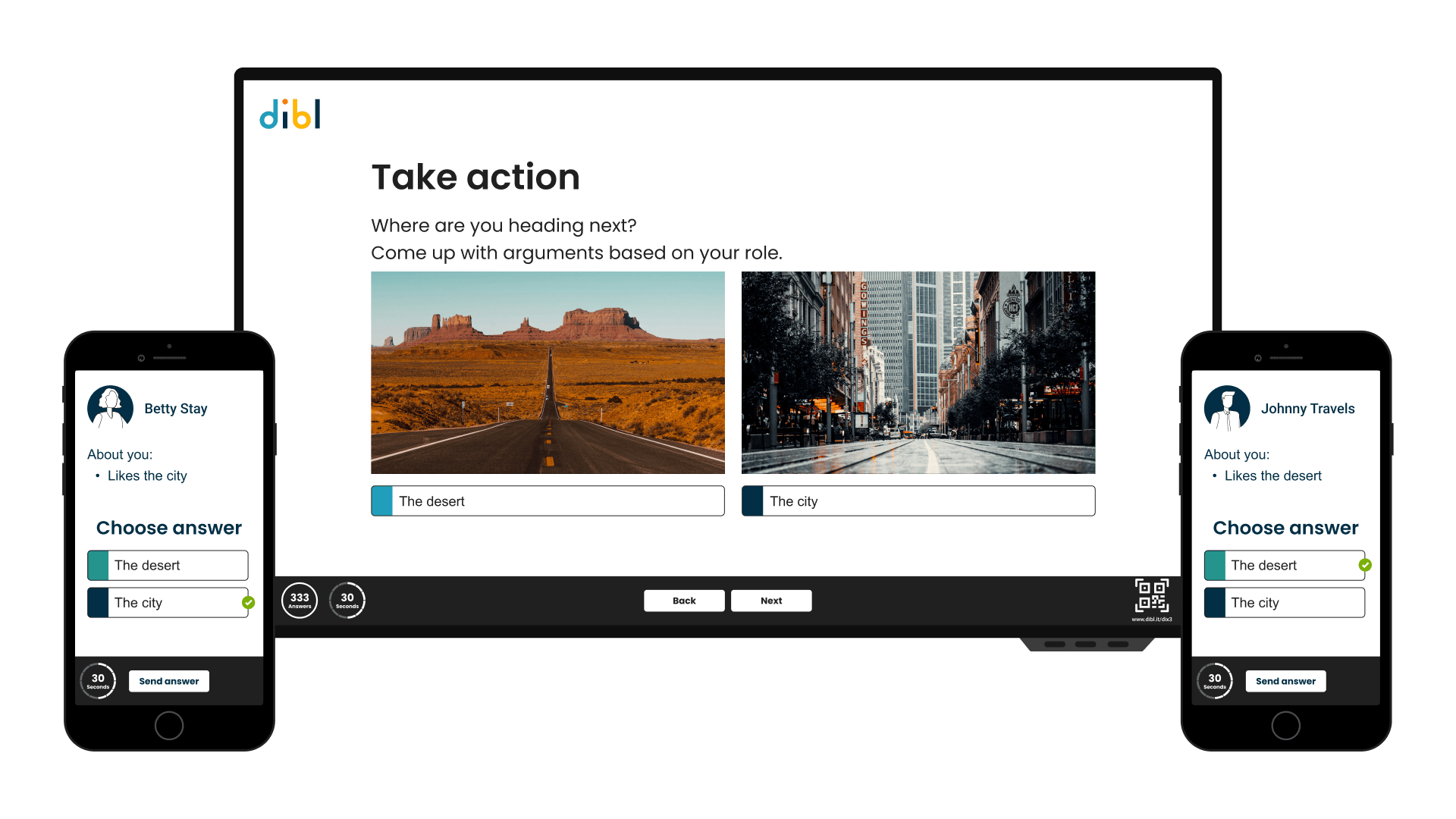
Participants tackle shared dilemmas with pros and cons, and it branches out based on the choices of the participants.
Everyone can follow the main road together based on the majority vote or participants can split out in side quests .
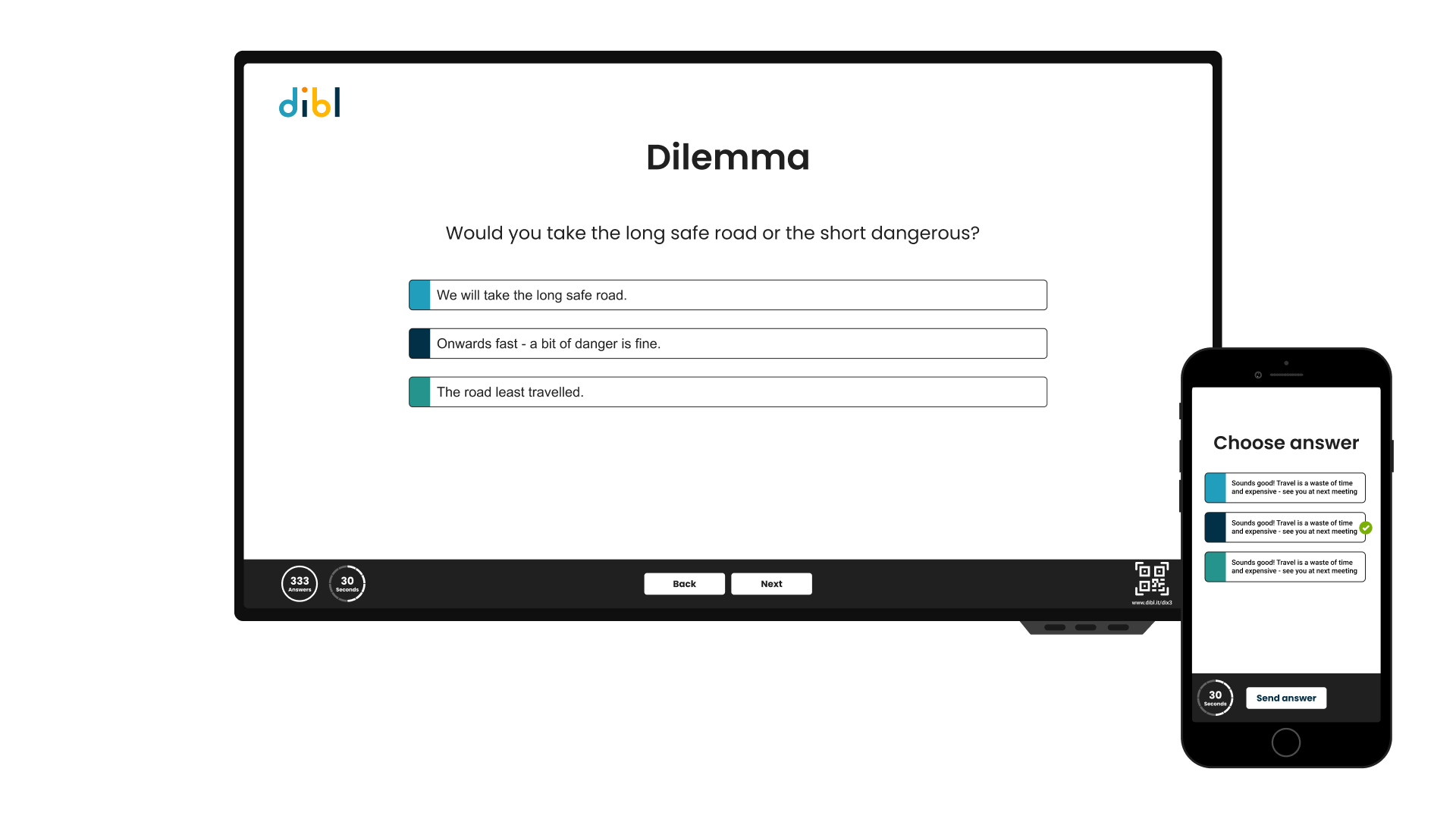
Our micro-sims use simple variables to simulate systemic interactions, like balancing a budget or keeping a variety of interest groups happy.
Participants must balance different variables across an entire scenario – discussing and reflecting as the micro-sim evolve.
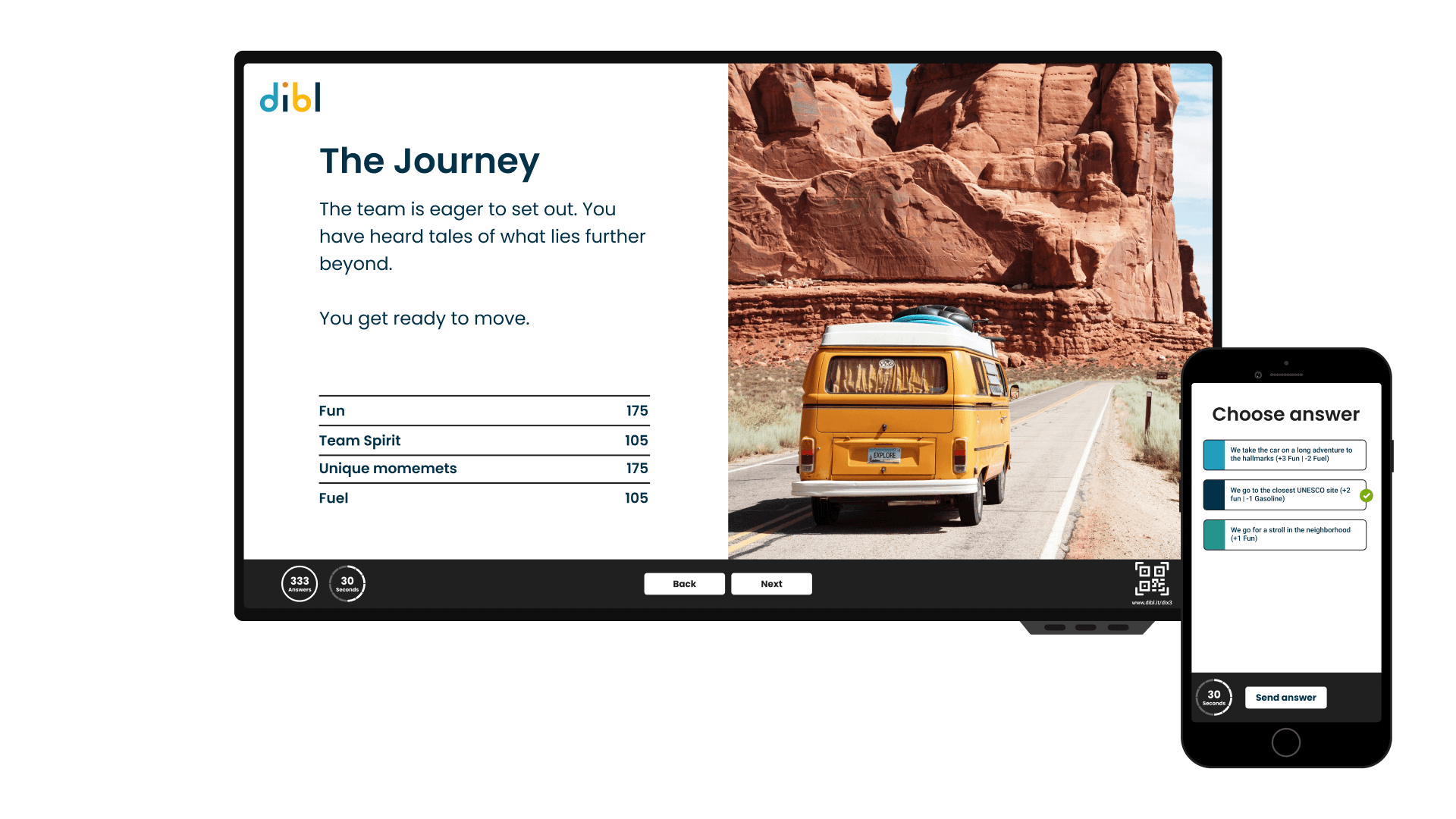
Allow open-ended input at any time during your sessions, and control freely where and how it is shown to who.
Choose from a list view, word cloud or sentence cloud.
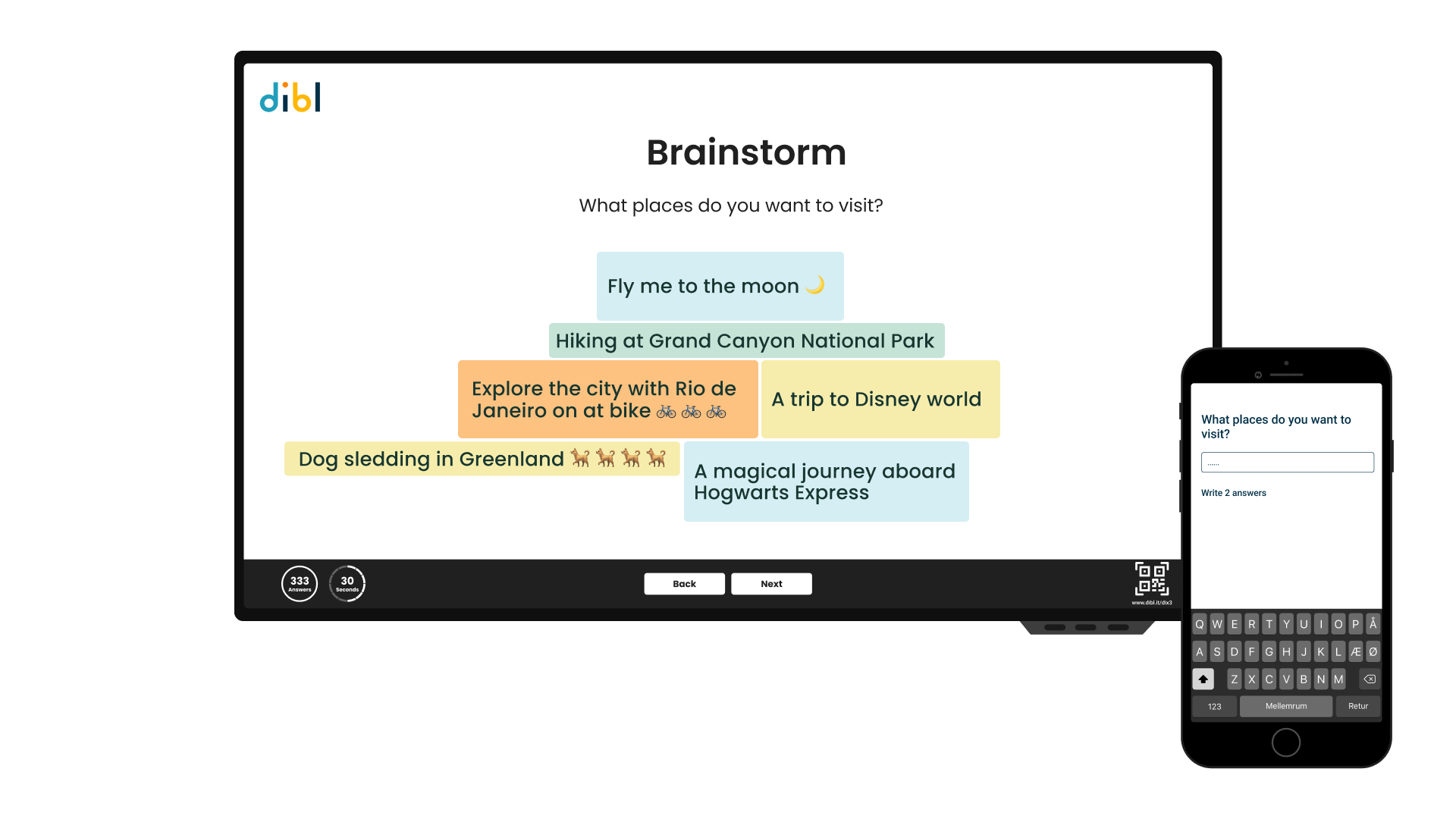
The core interaction most DiBLs are built on is voting on questions – whether picking between pre-defined approaches for a problem, or between user-submitted suggestions for any number of questions.
Voting is quick and easy, and you can always choose whether to show the results of a vote to the class. Different types of votes can be set up, allowing for e.g. multiple answers, or representing options as images instead of text.

Combine multiple questions, using both predefined and user-submitted answers, and you have a survey. Use DiBL’s robust branching and variable-tracking tools to structure the content for participants.
Combine questions where answers are shared with the group, to facilitate discussion, with questions where answers are private, to allow each user to answer honestly and safely.
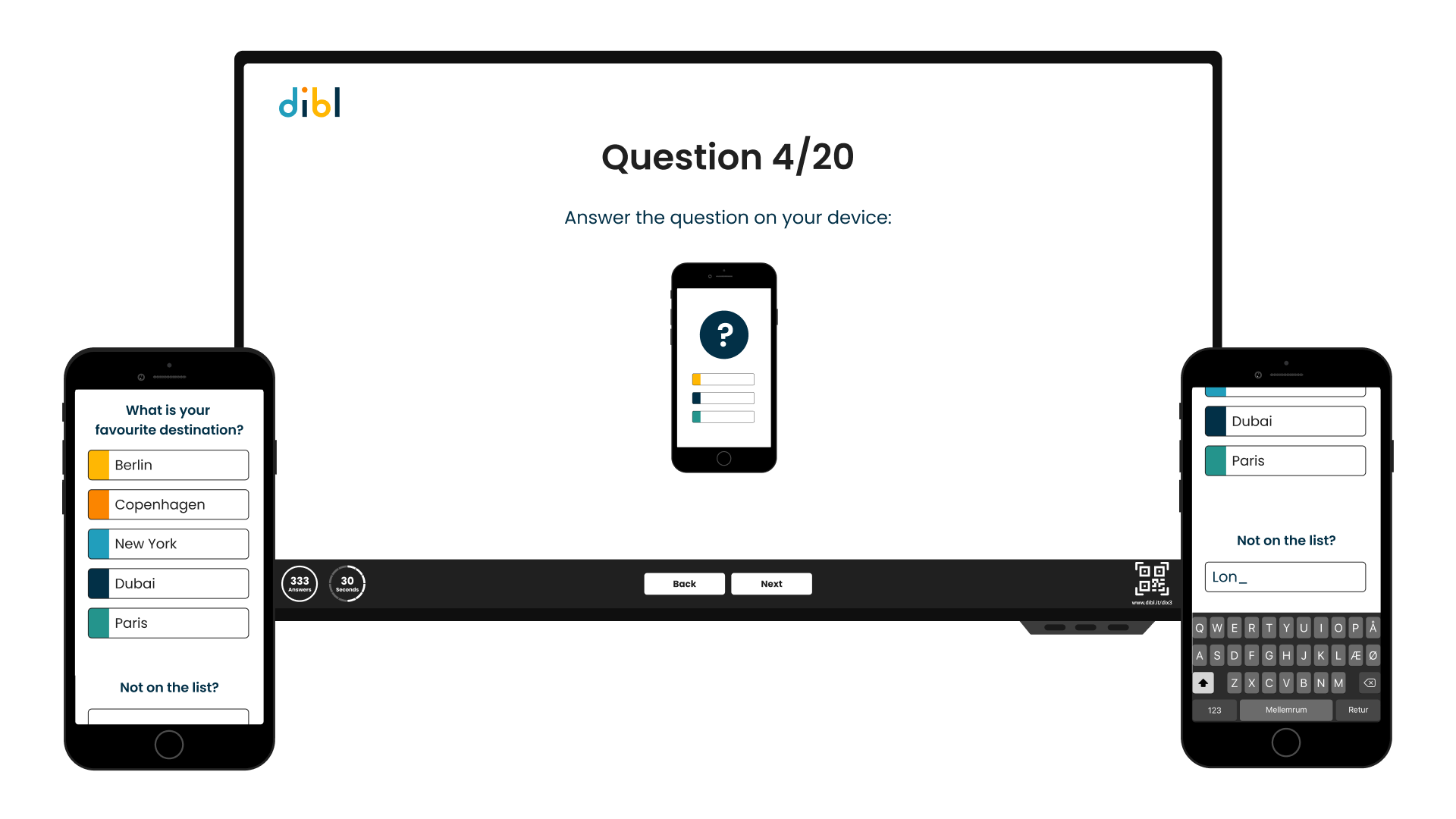
Make live assessments with feedback that is based on participants’ responses throughout including links to additional readings and materials based on the assesment.
In assesment we don’t just have right answer as we can score answers somewhere in between “right” and “wrong”.
During assessment you also have the ability to open or close specific branches in an assessment based on all participants responses or take participants down a specific branch.

Make quizzes that you know and expect but with more options to vary them like some answers will give more points, or some critical question can cost you a life or wager on your own answer for extra points.

How to get started?
You can choose between
Get tailor-made solution
Sit back, and let our experienced team harness the full potential of the DiBL platform for your purposes:
- Through co-creation, our experienced designers transform your idea into a full concept, complete with text and visuals.
- We create & set up the experience on our platform, ensuring that everything works.
Get Full DiBL platform
You get full access to our platform, with all the tools necessary to create your own DiBLs, and access to support, if needed:
- You create the concept, text and visuals yourself, and make changes as needed.
- You create & set up the experience using the powerful tools on our platform.
Our platform hosts and delivers your DiBLs, so they always work.
The platform automatically captures anonymized data on users, and provides data insights that can easily be exported.
Clients













